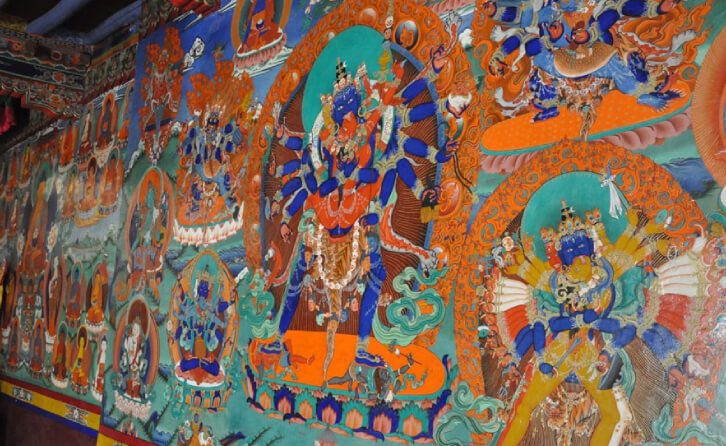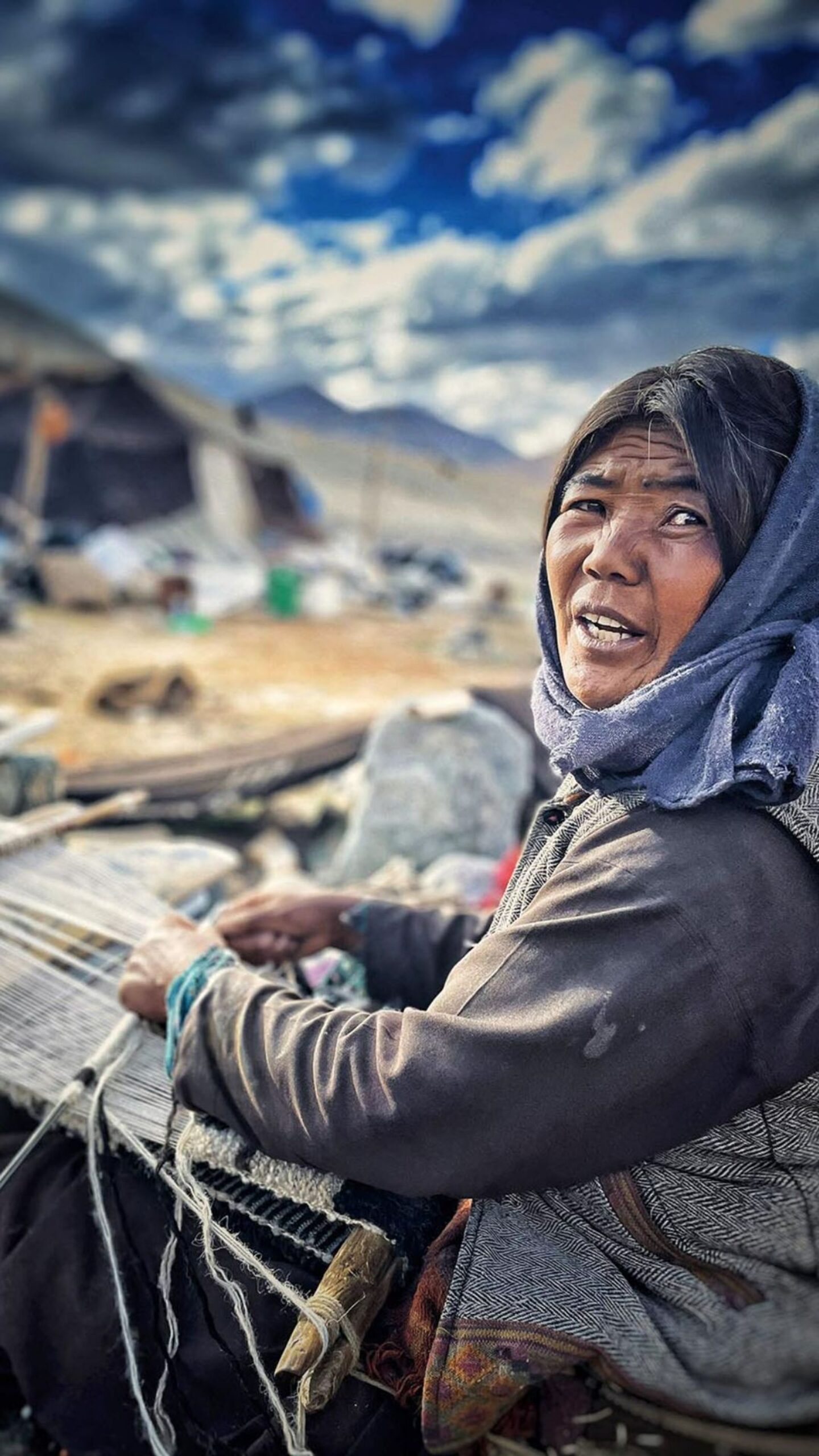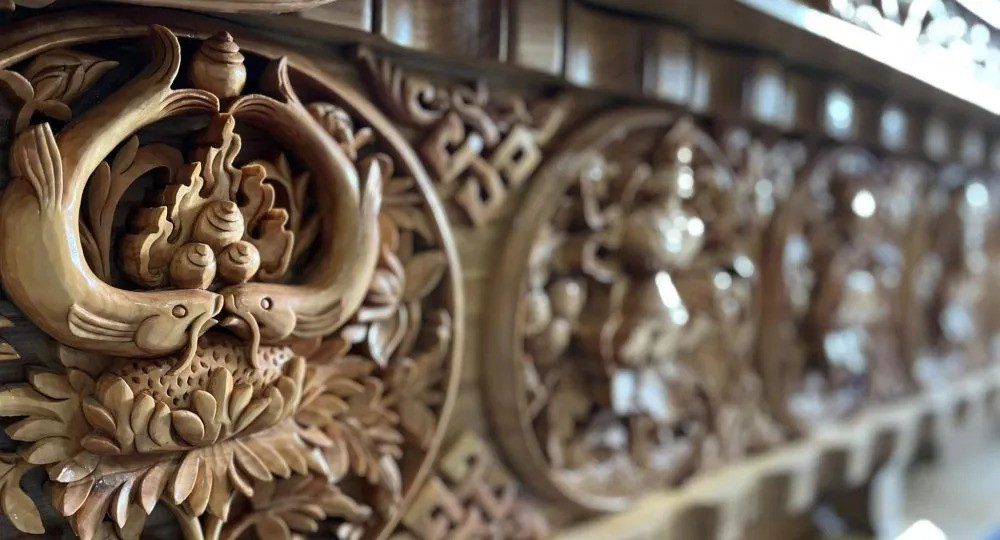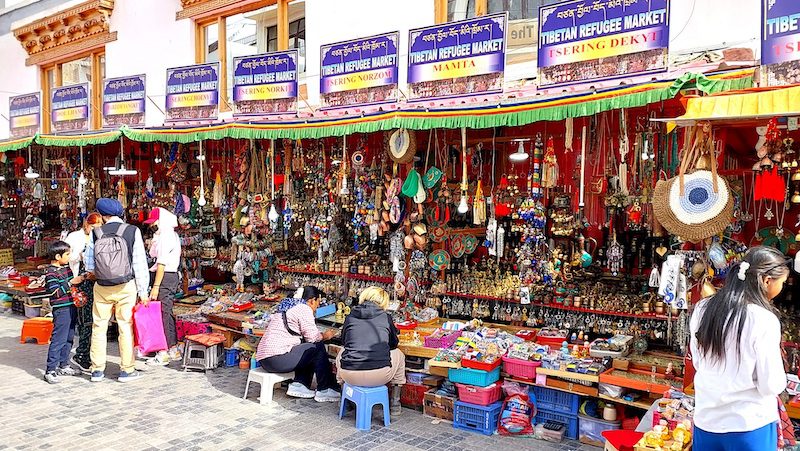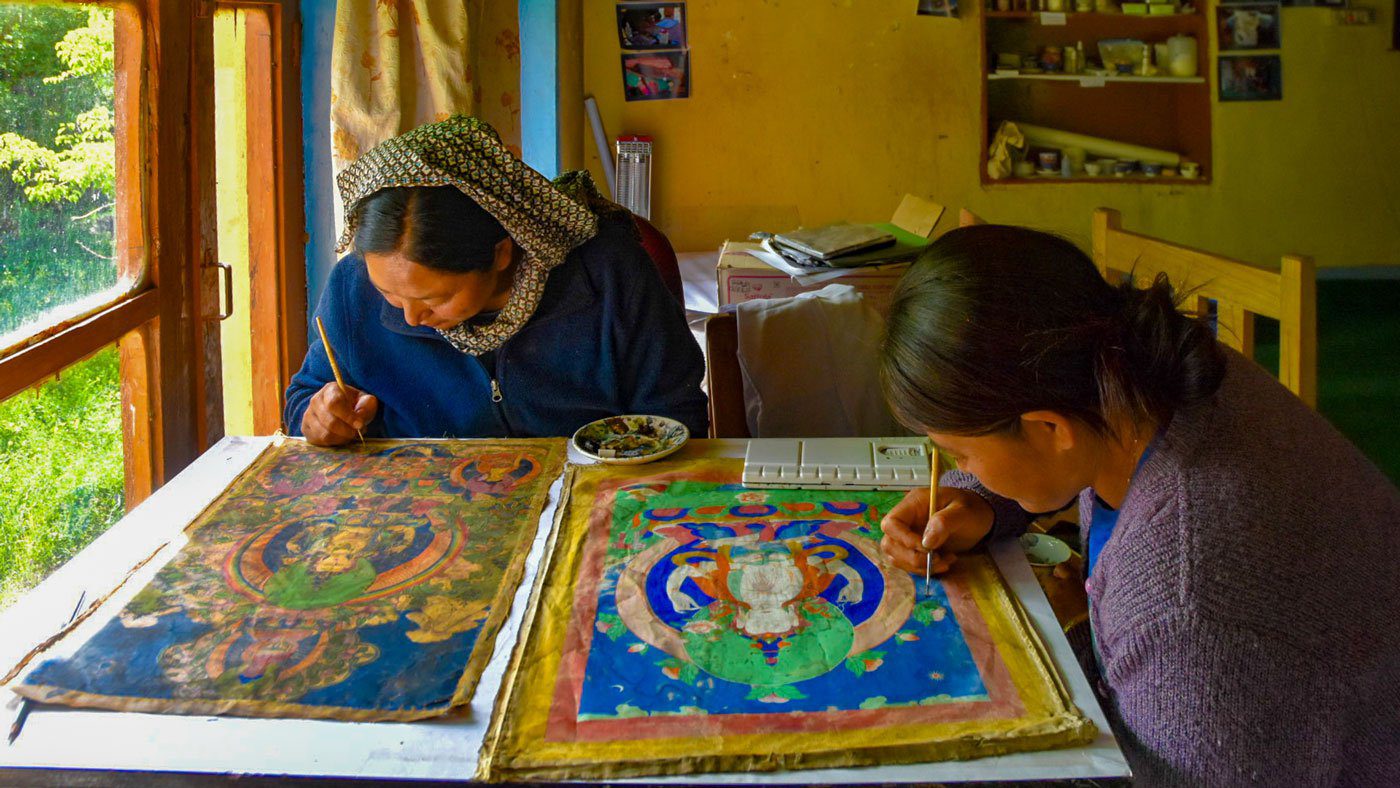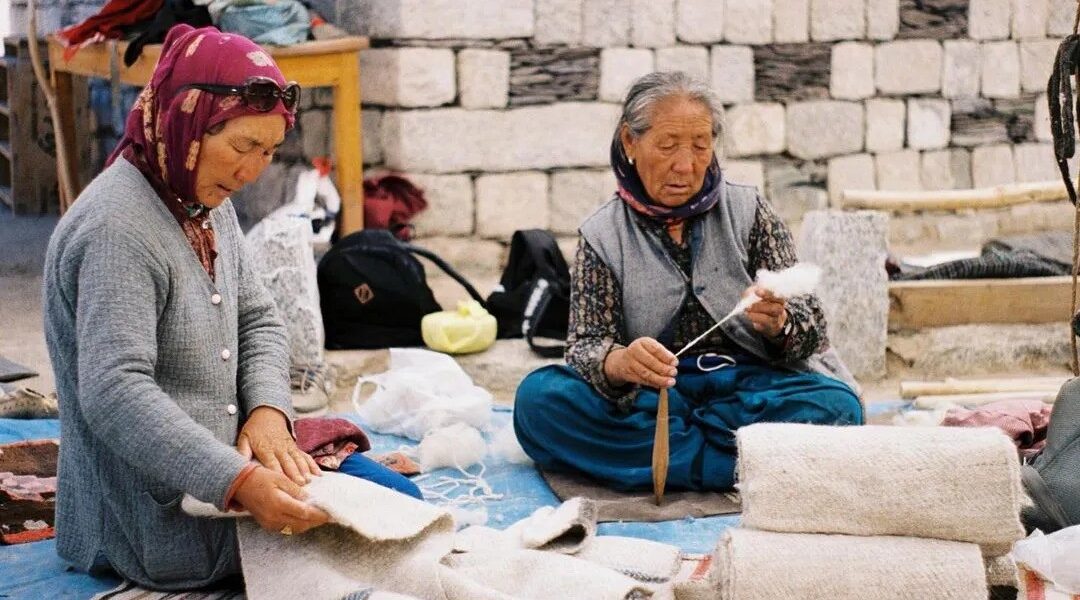Ladakh, known as the “Land of High Passes,” is a place of awe-inspiring natural beauty and profound cultural richness. Beyond its mesmerizing landscapes lies a community of skilled artisans who have preserved centuries-old traditions, breathing life into the region’s vibrant heritage. This article celebrates these artisans and their timeless crafts, exploring how they shape Ladakh’s cultural identity and captivate the world with their creations.
Introduction to Ladakh’s Artisan Heritage
Ladakh’s cultural heritage is deeply intertwined with its artisans, whose craftsmanship reflects the region’s history, spirituality, and way of life. From intricate wood carvings to exquisite Pashmina textiles, these crafts showcase not just skill but also the soul of Ladakhi traditions. Artisans here are not mere creators; they are guardians of a living legacy that continues to evolve with time.
Customer Testimonial:
“The beauty of Ladakh’s handicrafts is unparalleled. I purchased a handwoven Pashmina shawl that embodies both elegance and warmth.”
– Alice Turner, Travel Blogger, United Kingdom
The Role of Artisans in Ladakh’s Cultural Preservation
Artisans in Ladakh are more than creators; they are cultural custodians, preserving the essence of their traditions through art. These craftsmen and women play a pivotal role in keeping alive the skills and stories passed down through generations.
How Artisans Uphold Ladakh’s Traditions
Ladakhi artisans incorporate symbols, techniques, and materials that are deeply rooted in their cultural and spiritual beliefs. Crafts such as Thangka painting and stone carving are not just forms of art but also mediums of storytelling, conveying tales of Buddhism and Ladakh’s unique worldview.

Customer Testimonial:
“I was amazed at the spiritual depth in the Thangka paintings I saw. It’s not just art—it’s a narrative of devotion.”
– Carlos Rivera, University Professor, Spain
Challenges Faced by Ladakhi Artisans
Despite their invaluable contributions, Ladakhi artisans face significant challenges. The influx of mass-produced goods threatens traditional practices, while limited access to larger markets makes it difficult for artisans to sustain their livelihoods.
Key Challenges Include:
- Competition from machine-made products.
- Declining interest in traditional crafts among younger generations.
- Limited economic and technical support for artisans.
Exploring Traditional Handicrafts of Ladakh
Ladakh boasts a wide array of traditional crafts, each with its own story and cultural significance. These crafts not only enhance the region’s aesthetic but also connect the modern world with centuries-old traditions.
Thangka Painting: Spiritual Art of Ladakh
Thangka paintings are intricate works of art that depict Buddhist deities, mandalas, and spiritual scenes. Created with natural pigments and silk, Thangkas are often used for meditation and religious teachings.

| Feature |
Details |
| Materials Used |
Natural pigments, silk, canvas |
| Cultural Significance |
Represents Buddhist teachings and stories |
| Popularity |
Sought-after by collectors worldwide |
Customer Testimonial:
“A Thangka painting I bought in Leh transformed my home. Its spiritual energy is truly remarkable.”
– Sophia Martin, Psychologist, Canada
Pashmina Weaving: The Soft Gold of Ladakh
Ladakh’s Pashmina, also known as “soft gold,” is renowned globally for its warmth, texture, and elegance. Local weavers painstakingly spin and weave Pashmina wool, derived from Changthangi goats, into luxurious shawls and scarves.

Unique Selling Points:
- Lightweight and incredibly warm.
- Handwoven with unparalleled precision.
- Sourced from high-altitude Himalayan goats.
Customer Testimonial:
“I’ve never felt anything as soft and warm as Ladakhi Pashmina. It’s a treasure I’ll cherish forever.”
– Emma Nguyen, Interior Designer, Australia
Ladakhi Wood Carving: Art from Apricot Trees
Wood carving is another treasured craft in Ladakh, with artisans creating intricate designs on furniture, window frames, and religious artifacts. Apricot wood is commonly used for its durability and fine grain.

Customer Testimonial:
“The craftsmanship in Ladakhi wood carvings is unmatched. My apricot wood sculpture is the centerpiece of my living room.”
– James O’Connor, Architect, Ireland
The Influence of Buddhism on Ladakhi Crafts
Buddhism has profoundly shaped Ladakhi art and crafts. From intricate mandalas to monastery murals, the spiritual ethos of Buddhism is evident in nearly every aspect of Ladakh’s artistic heritage.
Monastic Arts: Crafting Devotion in Monasteries
Monasteries in Ladakh serve as centers of artistic excellence. Monks and artisans collaborate to create sacred artifacts, such as prayer wheels, statues, and murals, which are deeply symbolic.

Sacred Symbols: Integrating Buddhism in Everyday Art
Everyday crafts, such as jewelry and textiles, often feature sacred symbols like the lotus, dharma wheel, and endless knot, each carrying profound spiritual significance.
Sustainable and Eco-Friendly Practices in Ladakhi Crafts
Ladakh’s artisans have long embraced sustainability, using organic materials and eco-friendly techniques. This emphasis on sustainability aligns with the global push for environmentally responsible practices.
Organic Materials: From Nature to Craft
Artisans rely on locally sourced materials such as wool, clay, and wood. These materials not only reduce environmental impact but also enhance the authenticity of their crafts.
Supporting Local Economies: Artisan Cooperatives and Markets
Artisan cooperatives and local markets in Ladakh play a crucial role in promoting traditional crafts. These platforms help artisans reach a broader audience while ensuring fair trade practices.

Customer Testimonial:
“Visiting a Ladakhi craft cooperative was an eye-opener. Supporting these artisans feels like preserving history.”
– Elizabeth Peterson, Entrepreneur, United States
The Role of Women in Ladakhi Craftsmanship
Women are at the heart of Ladakh’s artisan community. From weaving textiles to creating pottery, their contributions are indispensable.
Empowering Women through Traditional Arts
Crafting has provided Ladakhi women with a source of income and empowerment, enabling them to support their families and communities.
Customer Testimonial:
“The woven baskets created by women artisans are not just functional—they’re works of art.”
– Marie Lambert, Environmental Consultant, France
Challenges and Opportunities for Women Artisans
While women artisans face challenges such as limited access to markets and resources, initiatives like workshops and cooperatives are helping bridge these gaps.

Conclusion: Celebrating the Artisans of Ladakh
The artisans of Ladakh are more than creators; they are storytellers, historians, and custodians of an extraordinary cultural legacy. By supporting their crafts, we not only honor their skills but also contribute to the preservation of Ladakh’s rich traditions. As visitors and admirers, let us ensure these timeless crafts continue to thrive for generations to come.
Q&A Section
1. What are the most famous crafts of Ladakh?
Ladakh is famous for Pashmina weaving, Thangka paintings, wood carvings, and pottery.
2. Where can I buy authentic Ladakhi crafts?
Authentic Ladakhi crafts can be purchased at local markets in Leh, artisan cooperatives, and select online platforms.
3. How does Buddhism influence Ladakhi crafts?
Buddhist themes and symbols are integral to Ladakhi crafts, inspiring everything from Thangka paintings to religious artifacts.
4. What materials are used in Ladakhi crafts?
Artisans use natural materials like Pashmina wool, apricot wood, clay, and organic pigments.
5. How can I support Ladakhi artisans?
You can support artisans by purchasing their crafts directly, visiting cooperatives, and promoting their work globally.
Crafting Ladakh
Crafting Ladakh | The journey through Ladakh mirrors the very essence of unraveling unknown horizons, as its dramatic landscapes and unique cultural identity awaken the deepest sense of wonder and exploration. Crafting Ladakh delves into this realm where inner peace intertwines with the wild, untouched beauty of Ladakh. From the snow-capped peaks to the serene monasteries, every step in Ladakh is a step toward self-discovery. The mountains, ancient paths, and unspoken mysteries stretch before travelers, offering a meditative experience where each encounter feels both effortless and transformative. Whether it’s trekking across remote valleys or sitting quietly beside a sacred lake, Ladakh invites those who seek a deeper connection to the natural and spiritual world.

Crafting Ladakh
The monasteries of Ladakh stand as living monuments to the region’s profound spiritual heritage. With origins dating back over a thousand years, these ancient structures are both places of worship and repositories of art, culture, and wisdom. Hemis Monastery, one of the largest in Ladakh, is renowned for its annual festival, featuring colorful mask dances performed by monks. The history of these monasteries reflects Ladakh’s role as a crossroads between India, Tibet, and Central Asia, where religious and cultural influences have intertwined over the centuries.
The Tibetan Buddhist influence is especially evident in the architecture and daily life of the monks. Prayer wheels, intricate murals, and the soft hum of chants fill the air as visitors explore the monastery grounds. Each monastery, from the remote Lamayuru to the awe-inspiring Thiksey, offers a window into the spiritual heart of Ladakh. These centers of meditation, learning, and community life continue to thrive, preserving traditions that have shaped Ladakh for generations.
Why Visit Ladakh for Crafting Ladakh?
Ladakh is a destination that transcends mere travel. It offers a journey that touches both the outer and inner landscapes, making it a perfect setting for those who seek to unravel their own unknown horizons. The region’s breathtaking scenery—from towering mountain ranges to hidden valleys—provides not just an escape but a space for contemplation and growth. Ladakh’s culture, deeply rooted in Buddhist practices, invites visitors to reflect on their own lives and the world around them.
Ladakh’s people, known for their warmth and hospitality, add to the richness of the experience. Villages like Sumda Chun and the legendary Nubra Valley introduce travelers to a way of life that is intricately connected to nature and spirituality. Staying in local homestays allows for immersive experiences where one can learn about traditional Ladakhi customs, share meals made from local produce, and participate in community rituals.

Beyond its natural beauty, Ladakh offers a unique opportunity to explore oneself. The vastness of the region’s plateaus and the clarity of its skies seem to mirror the vastness of the human spirit. Whether it’s standing atop a mountain pass at 18,000 feet or meditating in a centuries-old monastery, Ladakh helps unravel the unknown horizons within each traveler.
Finding the Best Crafting Ladakh in Ladakh
Finding the best places in Ladakh to experience “Crafting Ladakh” involves venturing off the beaten path. Ladakh’s lesser-known treks, such as those leading to secluded monasteries or high-altitude lakes, offer unparalleled opportunities for solitude and reflection. The Markha Valley trek, for instance, takes travelers through verdant valleys, ancient villages, and high-altitude passes, allowing for both physical and spiritual exploration.
Ladakh’s iconic lakes, including Pangong Tso and Tso Moriri, are ideal spots for quiet contemplation. Their still waters reflect the sky, creating a mesmerizing landscape that feels timeless and infinite. Sitting beside these lakes, especially at dawn or dusk, brings an overwhelming sense of peace and connection with nature.

For those interested in Ladakh’s spiritual heritage, exploring monasteries such as Alchi, Phyang, or Diskit can be a transformative experience. These sites are not just places of worship but also centers of art, philosophy, and wisdom. Visiting these monasteries, with their ancient murals and intricate statues, offers insight into Ladakh’s rich cultural tapestry.
Ladakh’s Atmosphere and Crafting Ladakh
Ladakh’s atmosphere is unlike any other place on Earth. The stark contrasts between the rugged mountains and the serene, tranquil monasteries create an environment that feels both raw and sacred. The traditional decor in Ladakhi homes and religious sites reflects this balance, with mud-brick houses adorned with prayer flags and colorful thangkas (Buddhist paintings) that add warmth and spiritual meaning to the space.

The interiors of Ladakhi homes, often simple and functional, are filled with symbols of devotion. Small shrines dedicated to Buddhist deities are common, and the air is often fragrant with incense. The use of earthy materials, like stone and wood, along with brightly colored textiles, creates an inviting and peaceful space, perfect for relaxation and reflection.
Traditional Crafting Ladakh
Traditional Crafting Ladakh is an integral part of the region’s identity, offering a unique blend of flavors that reflect its harsh climate and remote location. Hearty, warming dishes such as thukpa (noodle soup) and momos (dumplings) provide the sustenance needed to endure Ladakh’s cold temperatures. Skyu, a thick stew made with root vegetables and barley, is another staple of the Ladakhi diet, designed to nourish both body and spirit.

Drinks like butter tea, made with yak butter and salt, are a must-try for anyone visiting Ladakh. This rich, savory drink is not only warming but also hydrating, making it essential for those venturing into the high-altitude regions of Ladakh. Chang, a local barley beer, is often enjoyed during festivals and community gatherings, adding a sense of joy and camaraderie to any occasion.
Live Cultural Crafting Ladakh in Ladakh
Ladakh is home to a vibrant cultural scene, with festivals and live performances held throughout the year. The Hemis Festival, which celebrates the birth of Guru Padmasambhava, is one of the largest and most famous events in the region. Monks dressed in elaborate costumes perform cham dances, which depict the triumph of good over evil. The energy of the festival, with its bright colors, rhythmic music, and elaborate rituals, draws visitors from around the world.
Other local festivals, such as the Losar (New Year) and Ladakh Festival, provide visitors with the chance to witness traditional dance, music, and crafts that have been passed down through generations. These events are more than just entertainment; they are a celebration of Ladakh’s rich cultural heritage and its deep connection to the spiritual world.
Trekking and Outdoor Activities Crafting Ladakh
Ladakh is a trekker’s paradise, offering some of the most stunning and challenging routes in the world. From the famous Crafting Ladakh, which follows the frozen Zanskar River, to lesser-known routes like the Sham Valley or Nubra Valley treks, Ladakh’s landscape offers endless possibilities for adventure and discovery. The high-altitude passes, such as Khardung La and Chang La, offer breathtaking views of snow-capped peaks and sprawling valleys.

Wildlife enthusiasts will also find Crafting Ladakh to be a haven for rare species such as the snow leopard, Himalayan blue sheep, and the Tibetan wild ass. Winter expeditions to spot the elusive snow leopard in the Hemis National Park are gaining popularity among wildlife photographers and conservationists alike.
The Importance of Preserving Ladakh’s Crafting Ladakh
Ladakh’s rich cultural and environmental Crafting Ladakh is under increasing threat from climate change and mass tourism. Preserving this unique region requires careful attention to sustainable tourism practices. Choosing eco-friendly accommodations, supporting local businesses, and participating in community-led conservation efforts are just a few ways that visitors can contribute to the preservation of Ladakh’s natural and cultural heritage.
Ladakh’s people have a long history of living in harmony with their environment, practicing sustainable agriculture, and maintaining a deep spiritual connection to the land. Visitors are encouraged to follow the same principles, leaving no trace and respecting the fragile ecosystems that make Ladakh so special.
Etiquette and Tips for Visiting Crafting Ladakh
Before visiting Ladakh, it’s essential to understand and respect the region’s customs and traditions. As a deeply spiritual place, Ladakh requires visitors to dress modestly, especially when visiting monasteries or attending religious ceremonies. Always ask for permission before taking photographs inside monasteries or of local people.
Medical Crafting Ladakh
Spa trail Crafting Ladakh
Crafting Ladakh

When Crafting Ladakh, remember to stay on designated paths to avoid damaging fragile ecosystems. Tipping is appreciated but not expected in most settings, and it’s important to carry cash, as many remote areas do not accept credit cards. Lastly, be mindful of altitude sickness and take the necessary precautions when traveling to higher elevations.
Conclusion: Enjoying Crafting Ladakh in Ladakh
Ladakh is a place where the physical and spiritual worlds converge, offering travelers a journey unlike any other. Whether you’re trekking across high-altitude deserts, exploring ancient monasteries, or simply sitting in quiet reflection by a mountain lake, Ladakh invites you to unravel your own unknown horizons. By respecting the region’s traditions and practicing sustainable tourism, you help ensure that Ladakh’s beauty and cultural richness will be preserved for future generations to explore and enjoy.

